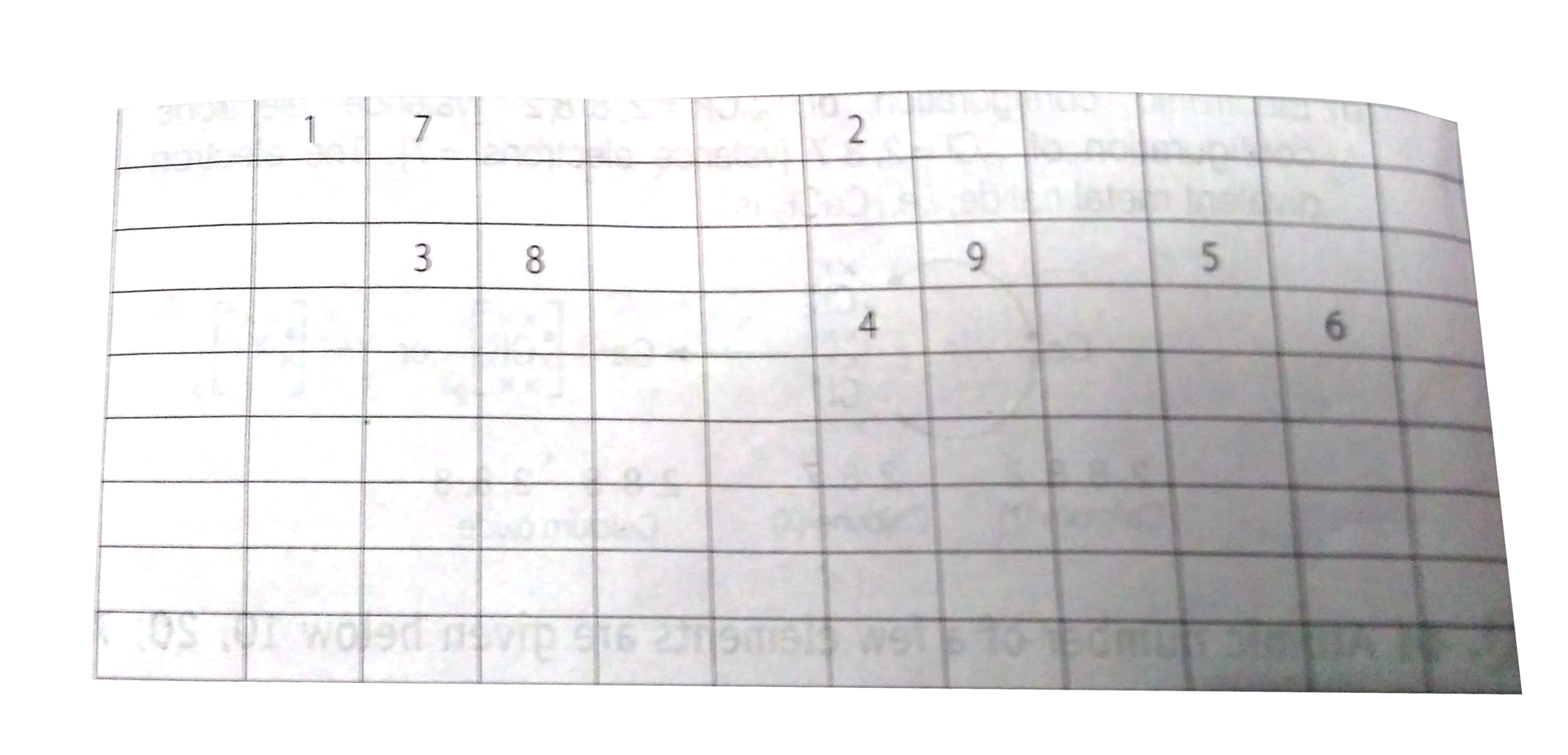Nd(Z=60) is a member of group 3 in periodic table. An isotope of it is β−active. The daughter nuclei will be a member of
Group -3
Group -4
Group -1
Group -2
The correct Answer is:A
To solve the question regarding the beta decay of the isotope of Neodymium (Nd, Z = 60), we can follow these steps:
Step 1: Understand Beta Decay
Beta decay is a type of radioactive decay in which a beta particle (an electron or a positron) is emitted from an atomic nucleus. In the case of beta-minus (β-) decay, a neutron in the nucleus is converted into a proton, and a beta particle (electron) is emitted.
Step 2: Determine the Change in Atomic Number
When a beta-minus particle is emitted, the atomic number (Z) of the element increases by 1. This is because a neutron is transformed into a proton, effectively increasing the number of protons in the nucleus.
Step 3: Calculate the New Atomic Number
Given that Neodymium (Nd) has an atomic number of 60, after the beta decay, the new atomic number will be:
Zdaughter=ZNd+1=60+1=61
Step 4: Identify the Daughter Nucleus
The element with atomic number 61 is Promethium (Pm). Promethium is the daughter nucleus formed from the beta decay of Neodymium.
Step 5: Determine the Group of the Daughter Nucleus
Referring to the periodic table, Promethium (Pm) is located in Group 3, just like Neodymium (Nd).
Conclusion
Thus, the daughter nuclei after the beta decay of Neodymium (Nd, Z = 60) will be a member of Group 3, specifically Promethium (Pm, Z = 61).
Final Answer
The daughter nuclei will be a member of Group 3.
---
Beta decay is a type of radioactive decay in which a beta particle (an electron or a positron) is emitted from an atomic nucleus. In the case of beta-minus (β-) decay, a neutron in the nucleus is converted into a proton, and a beta particle (electron) is emitted.
When a beta-minus particle is emitted, the atomic number (Z) of the element increases by 1. This is because a neutron is transformed into a proton, effectively increasing the number of protons in the nucleus.
Given that Neodymium (Nd) has an atomic number of 60, after the beta decay, the new atomic number will be:
Zdaughter=ZNd+1=60+1=61
The element with atomic number 61 is Promethium (Pm). Promethium is the daughter nucleus formed from the beta decay of Neodymium.
Referring to the periodic table, Promethium (Pm) is located in Group 3, just like Neodymium (Nd).
Thus, the daughter nuclei after the beta decay of Neodymium (Nd, Z = 60) will be a member of Group 3, specifically Promethium (Pm, Z = 61).
The daughter nuclei will be a member of Group 3.
Topper's Solved these Questions
- NUCLEAR CHEMISTRY BOOK - ERRORLESS CHAPTER - NUCLEAR CHEMISTRY EXERCISE - Ordinary Thinking (Rate of decay and Half - life)
97 Videos
- NUCLEAR CHEMISTRY BOOK - ERRORLESS CHAPTER - NUCLEAR CHEMISTRY EXERCISE - Ordinary Thinking (Artificial transmutation )
59 Videos
- NUCLEAR CHEMISTRY BOOK - ERRORLESS CHAPTER - NUCLEAR CHEMISTRY EXERCISE - JEE SECTION (Matrix Match Type Questions)
2 Videos
- NITROGEN CONTAINING COMPOUNDS BOOK - ERRORLESS CHAPTER - NITROGEN CONTAINING COMPOUNDS EXERCISE - JEE (ADVANCED) 2018 MORE THAN ONE CHOICE CORRECT ANSWER
1 Video
- ORES, MINERALS AND METALLURGICAL EXTRACTIONBOOK - ERRORLESS CHAPTER - ORES, MINERALS AND METALLURGICAL EXTRACTIONEXERCISE - JEE ANSWER TPYE QUESTION (JEE Advanced) 2018) Numeric answer type question
1 Video
Similar Questions
Complete the following crossword puzzle (Figure)
Across
(1) An element with atomic number 12
(3) Metal used in making cans and member of group 14
(4) A lustrous non-metal which has 7 electrons in its outermost shell
Down
(2) Highly reactive and soft metal which imparts yellow colour when subjected to flame and is kept in kerosene
(5) The first element of second period
(6) An element whihc is used in making flurescent bulbs and is second member of group 18 in the modern periodic table
(7) A radioactive element which is the last member of halogen family
(8) Metal which is an important constituent of steel and forms rust when exposed to moist air
(9) The first metalloid in modern periodic table whose fibres are used in making bullet-proof vests

View SolutionMetals of how many groups of periodic table show macimum catalytic activity.
View Solution
Knowledge Check
The last member in each period of the periodic table is
AAn inert gas elementBA transition elementCA halogenDAn alkali metalThe last member in each period of the periodic table is
AAn inert gas elementBA transition elementCA halogenDAn alkali metal91Pa234 an element of group 3 emits β-particles, the daughter nuclide belongs to
Agroup 2Bgroup 4Cgroup 1Dgroup 3
An element X belongs to group 14 and 2nd period of the periodic table. Its atomic number will be
View SolutionThe member of periods and group in the long form of periodic table are
View SolutionOxygen and sulphur both are the member of same group in periodic table but H2O is liquid while H2S is gas because
View SolutionAn element X belongs to group 17 and 2nd period of the periodic table. Its atomic number will be
View SolutionAmongst the metal Be, Mg, Ca and Sr of group 2 of the periodic table, the least ionic chloride would be formed by
View Solution